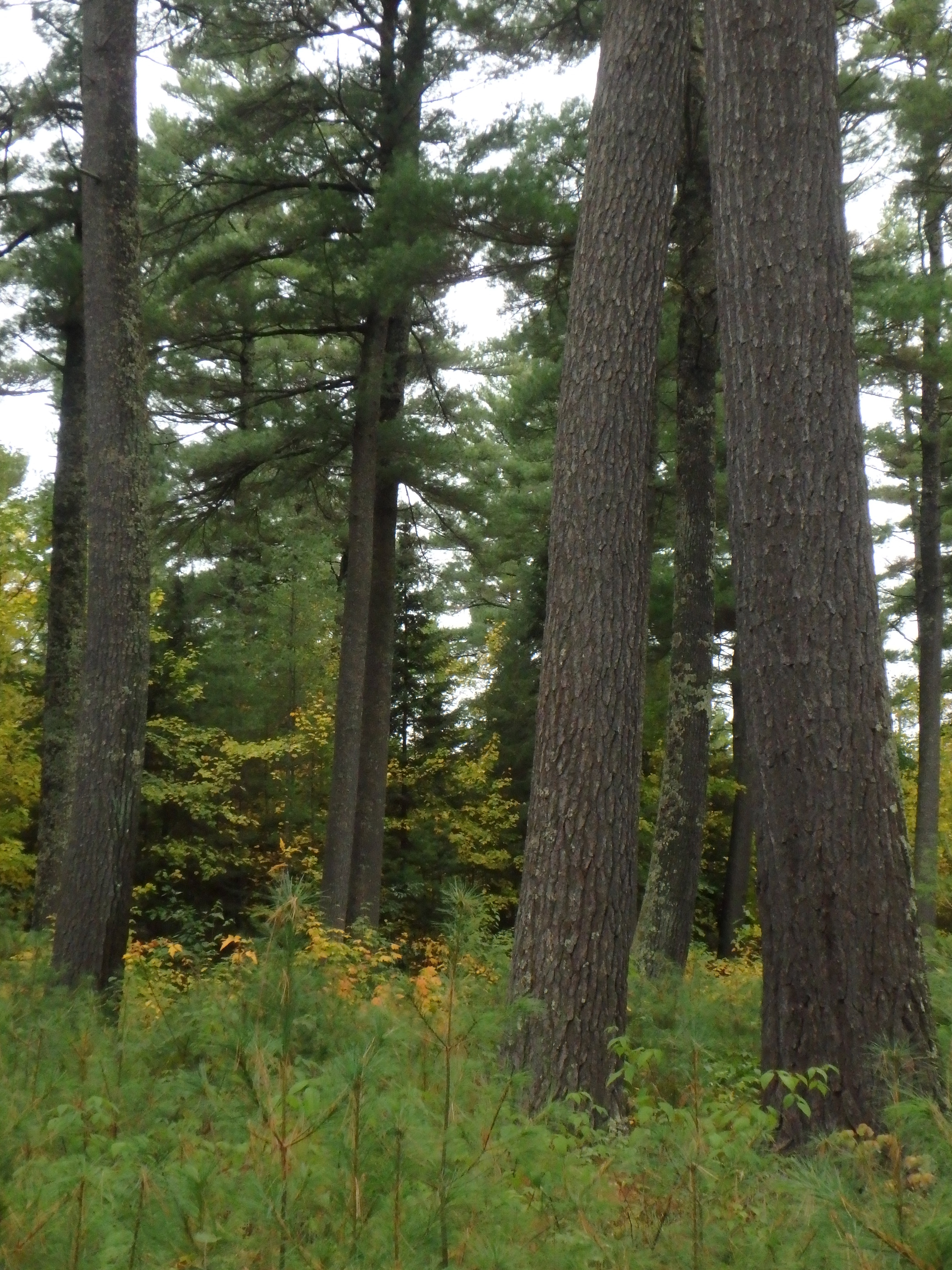OCTOBER 7, 2019 – For today’s topic, I wrestled between trees and Trump. Sorry to disappoint, but trees won.
A few years ago, we sold logging rights to back acreage of Björnholm, our family’s woodland retreat next to The Red Cabin. The loggers—two Mennonites—worked with remarkable efficiency, felling and piling hardwoods for sale to the local forest products facility. Though many trees were left standing, the aftermath looked like a war zone.
In penance I decided to plant white pine seedlings. White pine dominated this part of the world before sawyers of 125 years ago clear-cut everything in sight. Since then, white pine—many of them big, tall, and majestic—had become the stalwart guardians of our property along the lakeshore, but farther back where the recent logging operations occurred, very few pine had developed. The second-growth, mature hardwoods had shaded away any return of the white pine.
Accordingly, I ordered 350 two-year white pine seedlings from the Wisconsin DNR for springtime (2017) delivery. Meanwhile, I scoped out areas best-suited for planting; where magnificent trees could one day tower over the land. I took my dad’s old, hand-crafted planting bar to test the ease—or difficulty—of sinking the tool into the ground.
The planting bar is a heavy, sharp-edged, rectangular steel plate welded to a solid, two-inch, nearly five-foot-long steel handle. You jam the tool into the earth, then pull the handle laterally to create a wedge-shaped hole. After teasing the roots of a seedling into the opening, you sink the planting bar back into the dirt a few inches from the original opening and push the handle to pack the ground around the seedling.
In theory.
In practice, it was a very different story. My challenge was unforgiving ground, filled with rocks and a network of tree roots, and covered with sticks and branches from the logging operation. For nearly every seedling, I had to make two or three attempts before finding a suitable place for sinking the planting bar. Three weekends of sunrise-to-sundown labor later, all 350 seedlings were in the ground . . .
I’ve since planted another 100—with a little help from friends of our son Byron and daughter-in-law Mylène, who planted another 30 after their recent wedding celebration at The Red Cabin.
Now enter the deer—who in spring love to eat the shoots of young pine. Against this peril, in the fall a paper “bud cap” has to be stapled onto each of those seedlings . Meanwhile and continually, I have to prune back the thicket of raspberry bushes and poplar shoots that threaten to overwhelm the pine before they can put on adequate growth.
This past weekend, our visiting friend Sue Deetz, who is a serious naturalist, and my wife and I surveyed “pine progress.” So far, not only is the survival rate 98%, but many of the plantings put on 12” to 18” of growth this past season. I am overjoyed. I can “see” this forest five, 10 . . . even 100 years from now.
What a glorious sight for the future to behold!
(Remember to subscribe to this blog and receive notifications of new posts by email.)
© 2019 Eric Nilsson
